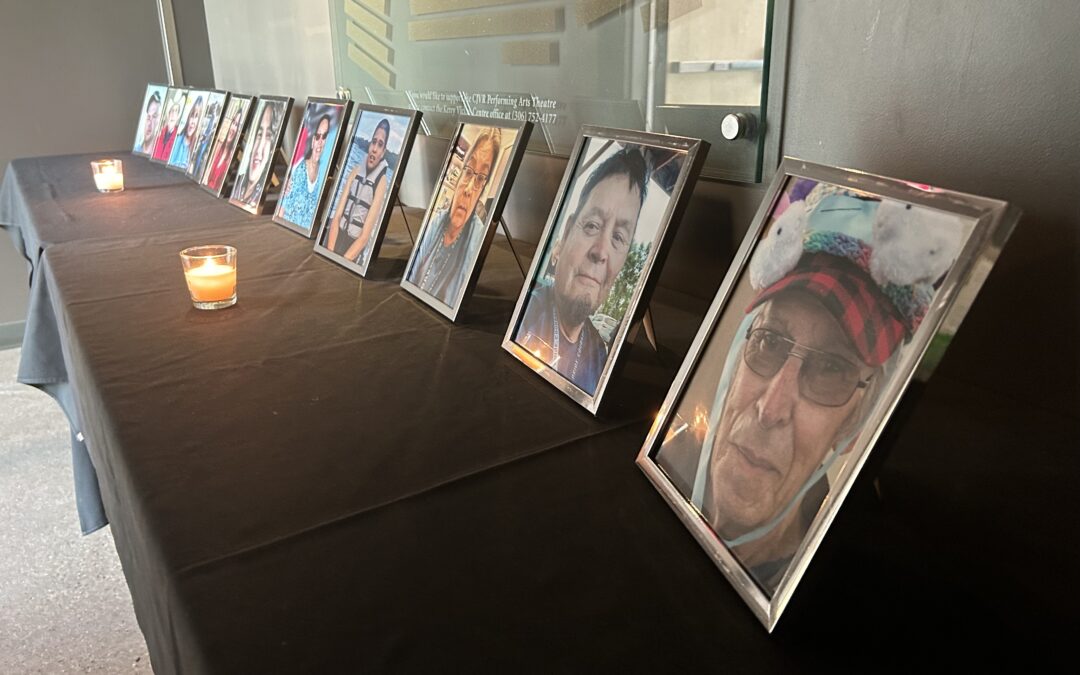WARNING: Distressing content
The James Smith Cree Nation inquest has heard from Myles Sanderson’s direct parole officer.
Natasha Melanson, was Sanderson’s community parole officer after he was released from custody a second time. Sanderson’s statutory release had been revoked in Oct. 2022 when it was found he was living with Vanessa Burns in violation of his release conditions. After he was taken back in to custody, the parole board eventually ordered Sanderson be released with more strict conditions.
When she first started meeting with Sanderson Melanson said he was guarded when it came to his interactions with her.
“He was a little bit apprehensive,” she said.
As they continued to work together Melanson said she noticed Sanderson softening up towards her. She said he was never disrespectful to her when they met. Melanson explained Sanderson was doing what he was supposed to do when it came to taking programming, however she reported there was an instance where he violated his release conditions when he had contact with one of his children without informing his parole officer beforehand.
“He fully disclosed he spent some time with his son,” she said.
Since Sanderson disclosed the violation to his parole officer it was decided the violation was not serious enough to warrant his release being revoked a second time.
Statutory release for Sanderson was eventually revoked for a second time when in May of 2022 Vanessa Burns got in touch with Melanson and told her that Sanderson had come to her apartment and forced his way inside. Melanson said the nature of the breach was a factor in the decision to suspend Sanderson’s statutory release and issue a warrant.
“He did breach his no contact order in an aggressive way,” she said.
After the warrant for his arrest was issued Sanderson was informed by his parole officer that he needed to turn himself in, which he said he would do. The last time Sanderson was in touch with his parole officer was in June of 2022, when he told her he was having emotional issues in regards to turning himself in to police.
When an offender breaches their release conditions and doesn’t turn themselves in, Melanson explained the parole officer who was responsible for the offender will inform police in the relevant areas. She said a parole officer will also work to find the offender by talking to people like family and people who the offender had been seeing for programming.
“That depends partly on how many contacts I have,” said Melanson.
When talking with contacts Melanson said she was told Sanderson may have been in the Melfort area and as a result she reached out to the Melfort RCMP to let them know. She said she did not get any information telling her Sanderson was on James Smith Cree Nation.
Intake parole officer testifies
The second witness the inquest heard from was the parole officer who processed Sanderson when he was brought in to the Saskatchewan Penitentiary to serve his sentence. Daryl Schmidt explained during much of his testimony how an intake assessment is done in the corrections system.
Schmidt’s assessment found Sanderson had a low potential for reintegration and needed intensive programming in order to deal with his risk of reoffending. Sanderson’s issues were laid out in his correctional report which was put together by Schmidt. He added Sanderson was honest about his past violence towards his former common law partner.
“He was very open about it,” he said.
In putting together his reports Schmidt relied on documents provided from police and corrections. He as well sat with Sanderson for interviews. When he first met Sanderson Schmidt said he found him to be an intimidating person due in part to his physical size.
“I was a little bit weary,” he said.
Testimony offers insight into programming
Another witness the inquest heard from Wednesday was Brandy Ross, an Indigenous Program Correctional Officer at Saskatchewan Penitentiary. Ross testified about Sanderson’s participation in the Indigenous Multi Target High Intensity Program. Ross explained the offenders who take part in the program have been convicted for a variety of offences, many of them involving violence.
“They can vary in range,” she said.
The program generally takes five to six months with six to 12 offenders taking part in a class at a single time. The program facilitators are also assisted by an Elder.
When she first met Sanderson, Ross said she found him to be standoffish, which she said is not uncommon. During the program Sanderson was for the most part respectful, one exception being when he made an inappropriate comment to one of the program facilitators, after which he was spoken to. Ross said after he was spoken to Sanderson’s overall demeanor changed.
“Things went much better,” she said.
Sanderson completed the program, which Ross said he was proud to have done and it appeared to her he had made progress in dealing with some of his risk factors for offending.
When questioned by Deborah Burns about how Sanderson treated her compared to her male co-facilitator, Ross said she did not notice any different treatment.
“I feel that we were both treated the same,” she said.
Talking Stick is a Saskatchewan-based free anonymous chat platform that connects people seeking emotional support to a trained Indigenous peer advocate 24/7. https://my.talkingstick.app/
